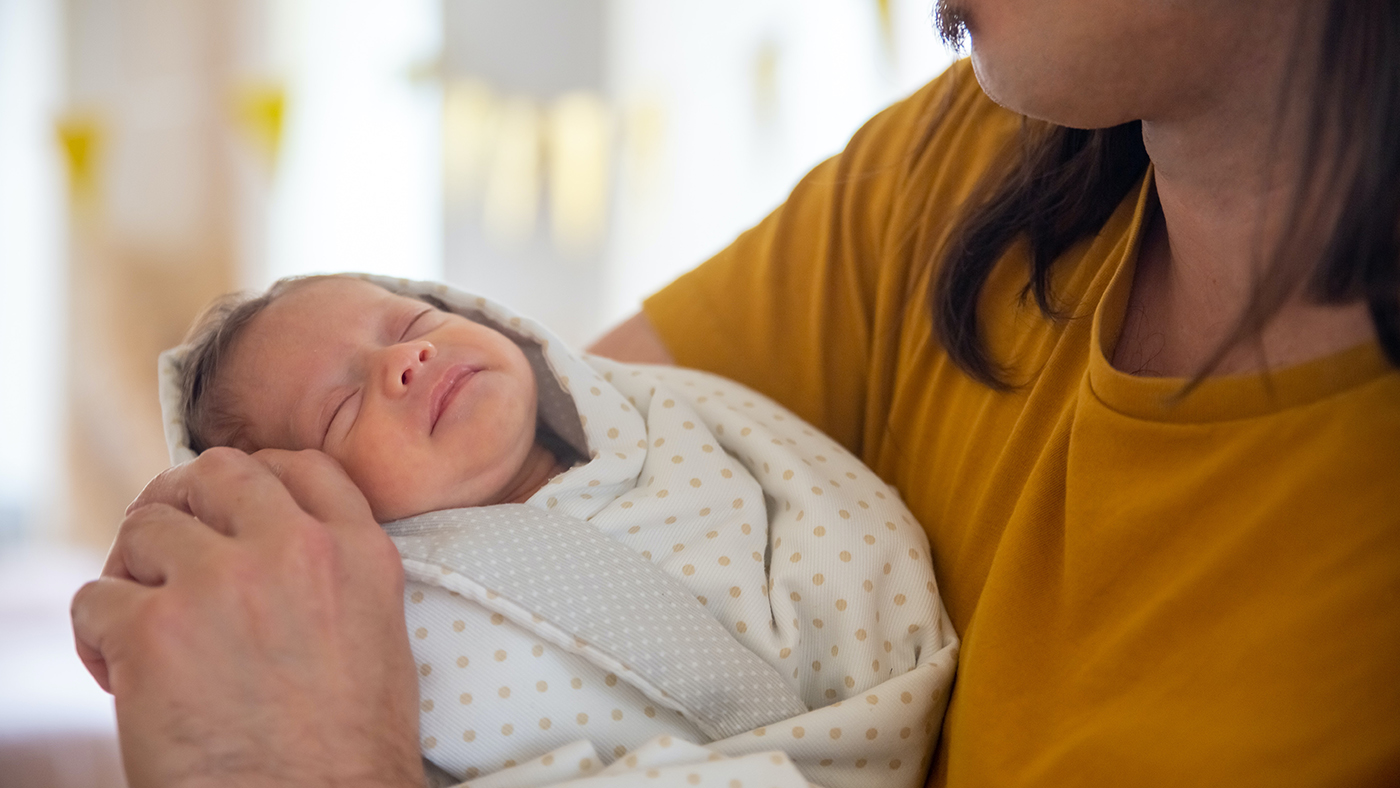What is the rooting reflex for?

When you stroke your baby’s cheek near to their mouth they will turn their head towards the side that you have stroked and open their mouth searching for a breast or bottle – this is the rooting reflex. It's is a primitive reflex, and one that begins before your baby is born and continues for months after birth. It emerges around 24 to 28 weeks after conception.[1]
Why it's important for brain development as well as feeding
Rooting is important for your baby to ensure that they can feed after birth, but the development of rooting and sucking also supports the development of areas of your baby’s brain.
One of the earliest parts of your baby’s brain to develop before they are born is the area that is linked to the movement and sensation of the mouth and tongue. The mouth is the area that your baby will use to find out about the world, and it remains one of the most sensitive areas throughout life.
Touching their mouth and sucking links to brain development; for example, sucking their thumb in the womb contributes to the development of their brain, stimulating areas linked to the mouth and hand.[2] These areas will be important as your baby explores the world and, when they are older, in speech and fine motor skills.
What happens to this reflex as your baby's other senses develop?
The rooting reflex could be described as one of the first situations where your baby is moving to achieve a particular aim, this is known as goal-directed behaviour[1] and is an important part of exploring the world and of solving problems. As your baby’s other senses develop, they will turn their head in response to seeing the breast or bottle, not only in response to touch.
The rooting reflex is strongest in the first few hours after birth and this is why feeding is often encouraged straight after your baby is born.[3] The strength of your baby’s rooting reflex will be linked to how hungry they are, so they might respond more vigorously if they are hungry than if they are full.
The rooting reflex will become integrated in the next few months as your baby becomes able to look at a breast or bottle and turn ready to be fed, rather than moving in response to touch. The integration of reflexes is linked to the development of your baby’s brain, as their brain develops their responses and movements are controlled by higher areas of the brain rather than by primitive reflexes.[4]
References:
[1] Goddard-Blythe, S. (2004). The Well Balanced Child: Movement and Early Learning. Stroud: Hawthorn Press.
[2] Allman, J. (2000) Evolving brains. New York: Scientific American Library.
[3] Odent M. The early expression of the rooting reflex. Proceedings of the 5th International Congress of Psychosomatic Obstetrics and Gynaecology, Rome 1977. London: Academic Press, 1977: 1117-19.
[4] Yoo H, Mihaila DM. (Updated 2021 May). Rooting Reflex. In: StatPearls [Internet]. Treasure Island (FL): StatPearls Publishing; 2021 Jan-. Available from: https://www.ncbi.nlm.nih.gov/books/NBK557636/ (Accessed 8th October 2021)